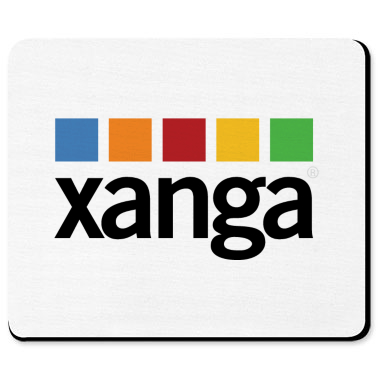Serendip is an independent site partnering with faculty at multiple colleges and universities around the world. Happy exploring!
"Medium is the Message"
"The medium is the message"
because it is the
"medium that shapes and controls
the SCALE and form of
human association and action." (2)
This quote comes from Marshall McLuhan, a Canadian philosopher and professor of English who lived during the 1900s. His coined term “the medium is the message” is widely known, but what exactly does it mean? McLuhan believed that a medium’s characteristics and the way it affects society is more significant and important than the medium’s actual content. Each medium has its own specific attributes and so influences people in different ways. For example, a book depends on the visual, and allows one to read and reread passages in order to understand a plot or meaning. A film on the other hand includes audio, which engages another bodily sense and makes it harder to rewind and re-see/hear what’s happening. For McLuhan it was even more difficult to do this, because during his lifetime, to see one scene, the entire film had to be rewound and replayed. The difference in these mediums provokes the question, “Does form influence content?” . Books and movies are two very different formats, and just two of many, each being inherently different from the other because of the way that they present information to their audience: one through written words that have to be read, and the other via an amalgamation of visuals and sounds. By McLuhan’s theory, it matters less what is being read or watched than whether the audience is reading or watching. The same is applied to all other forms of media as they are invented and advance, including the radio, television, etc. He said that the medium and what it requires to be interpreted and understood has an effect on the way that society thinks and acts, and so changes its organization. This he called “the global village”, in that the world is now “interconnected by an electronic nervous system” (4). It’s like we’re all living in one big village of people who can know what is going on in countries across the world while it’s happening, bringing human experience back to like when everyone lived in tiny villages near each other.
McLuhan died right around the time that computers became popular in the home (circa the 1980s), so never got the chance to see them evolve and essentially become the most prevalent form of communication for today’s generation, just as was print, radio, and film at one point. As of 2003, 76 percent of school-aged children had home computers, and it’s safe to say that it’s uncommon for any college-enrolled young adult not to own a laptop (1). The big question now isn’t whether or not to get a laptop, but rather should it be a PC or a Mac, a netbook or a studio-sized screen.
Deemed by one writer as “the high priest of pop culture” (3), what would McLuhan have to say about the way the internet and blogging have developed as mediums, specifically those sites that are designed to let the average person create their own sort of “blog” and share words, thoughts, photos, videos, and whatever else they can think of, on the web? “One wonders what McLuhan would make of the Internet?” (4) Does the Canadian scholar’s theories hold true today, is the medium more important than the content, or has technology surpassed even the communications media king?
There are thousands, if not hundreds of thousands of social networking websites that make blogging readily accessible to computer users (including our own host – Serendip!), but there are four that seem to be the most widely used and most popular:
1. Xanga
2. Flickr
3. YouTube
4. Tumblr




Of these four hosting sites, Xanga (zang-guh) is easily the “bloggiest blog”. By that I mean that it has a normal formatting style, and is used almost entirely as a sort of personal online diary for young teens and the odd adult who’s managed to keep up with their postings. It has a grouping component, called “Blogrings”, which users can join in order to find other bloggers who share interests. For example, if you like writing poetry, there literally hundreds of different blogrings that you can join to browse other people’s posts and have them look at yours. There is also an “eProp” feature that’s the equivalent of a “like” button on Facebook… if you like someone’s post, you click the button to show your appreciation, either in addition to, or instead of leaving a comment.
While it may not have been the first weblogging site created, Xanga was definitely one of the bigwigs in terms of popularizing blogging for the masses, at least for my generation. When I was in middle school and early high school it seemed like all my friends had their own Xanga, and posting regularly about our daily lives and angsty feelings was a necessary thing to do (along with taking Myspace pictures in mirrors, of course). It’s fairly outdated now that other social networking sites have sprung up and improved upon Xanga’s capabilities, but it was definitely one of the firsts for my age group of bloggers. In the case of this general weblogging medium, McLuhan’s “medium is the message” theory can be supported by the fact that Xanga and the other ‘original’ sites made blogging a part of this generation. Over-sharing and posting personal information on the web has become a problem as the first “computer-age” group of adults enter the real world and have trouble finding jobs. McLuhan would say that the popularization of Xanga shaped society, because it created a generation that knows almost no bounds in terms of posting and taking things on the internet.

![]()
Flickr is another one of those sites that is highly popular with bloggers. It’s a place where people can store and share their photographs and images, as well as leave comments on users’ postings. The site offers a “favorite”-ing feature that lets you mark pictures as you favorites so that they’ll be stored for you on your own account. Flickr also encourages its users to tag photographs with keywords to make searching for images easier.
(For example this is what comes up when you search “genre”)

Instead of being a place where people share through words (although they can through comments), Flickr is a medium where users “blog” via images. Whether it’s made up of photographs taken by the members themselves or a collection of random pictures, the content of an individual’s Flickr account can reflect their interests and life. However, it can be said that the medium outweighs the ‘message’. Before Flickr, which is easily the most popular “Photoblog” out there, blogging was constrained to mostly just written blogs with the occasional photo. But as Flickr gained popularity, more and more young people started to become interested in photography, and posted their pictures up on the web. So in this case, McLuhan may be correct in his belief that the way technology advances and changes affects how society reacts, as well as in his theory of “global village”. Flickr allows users to view a map of the world, and search via location. This feature links computer users to the rest of the world through images, giving people the ability to connect to different places and be aware of things going on across the world in just a few clicks.

(Example – I used the map feature to locate images of our college just by typing in the area code!)
Many may not consider YouTube to be a “blogging” medium, but it most definitely is. Chris Crocker’s Britney Spears meltdown, anyone? Though the website is often used just to post funny videos of people falling (they never get old), millions of people make “vlogs”– video blogs – that they post daily, weekly, monthly. Urbandictionary defines these vlogs as “the next in the evolution of narcissism”. This assumes that the only basis for blogging is a sense of self-importance and pride, so the switch to video/audio is just one more step up on the vanity ladder. In the case of many bloggers Urbandictionary’s definition may hold true, but McLuhan would consider the creation of vlogs as being an evolution of technology and blogs themselves, just as radio and television were an evolution from typed print. And if the effect of the medium is the most important thing, there is definitely something to be said about how vlogs stream information. Watching the expressions on someone’s face and hearing how they pronounce words completely changes how the content is received and processed by the audience, compared to just reading a blog. Think about all the hype Chris Crocker’s “Leave Britney Alone” video caused… he appeared on The Today Show, CNN, MSNBC, The Tonight Show, etc…. would that have happened if his “meltdown” had been in a typed format? Probably not. So in the case of YouTube, McLuhan’s theory definitely holds true.

![]()
Tumblr is my personal favorite, and probably the easiest to use, a characteristic on which the site prides itself. It basically consists of what is called a “Dashboard” where you get instant updates when other users blog. All you need to do is search keywords in the search bar of things that you are interested in, and “follow” anyone whose blog you enjoy reading/watching/viewing/listening to… because Tumblr lets you choose your medium every time you blog (or “reblog” if you like what someone else posted and want it on your site). The site actually deals with the copyright aspect fairly well (or at least better most other blogs) in that it puts a tag on anything a user “reblogs” (via: so-and-so). And like most other social networking sites, it really does enable the “global village” phenomenon. As an actual blogger via Tumblr, I’ve had the experience of talking to people in the UK and Australia, as well as my friends who go to school in Connecticut.

In terms of McLuhan’s medium theory, Tumblr may have beaten the odds. It gives a different experience from the other websites, because it’s essentially a combination of every other type of blog. So if it’s just already existing mediums thrown together to form one medium, does that actually make it new or any different from the others? It might just mean that McLuhan’s theory only applies to that which is “new”… so maybe it’s time someone threw the king off his media studies thrown and took the crown?
Sites used:
(1) http://maisonbisson.com/blog/post/11088/us-census-on-internet-access-and-computing/
(2) http://www.marshallmcluhan.com/faqs.html
(3) http://www.leaderu.com/orgs/probe/docs/mcluhan.html
(4) http://www.livinginternet.com/i/ii_mcluhan.htm


